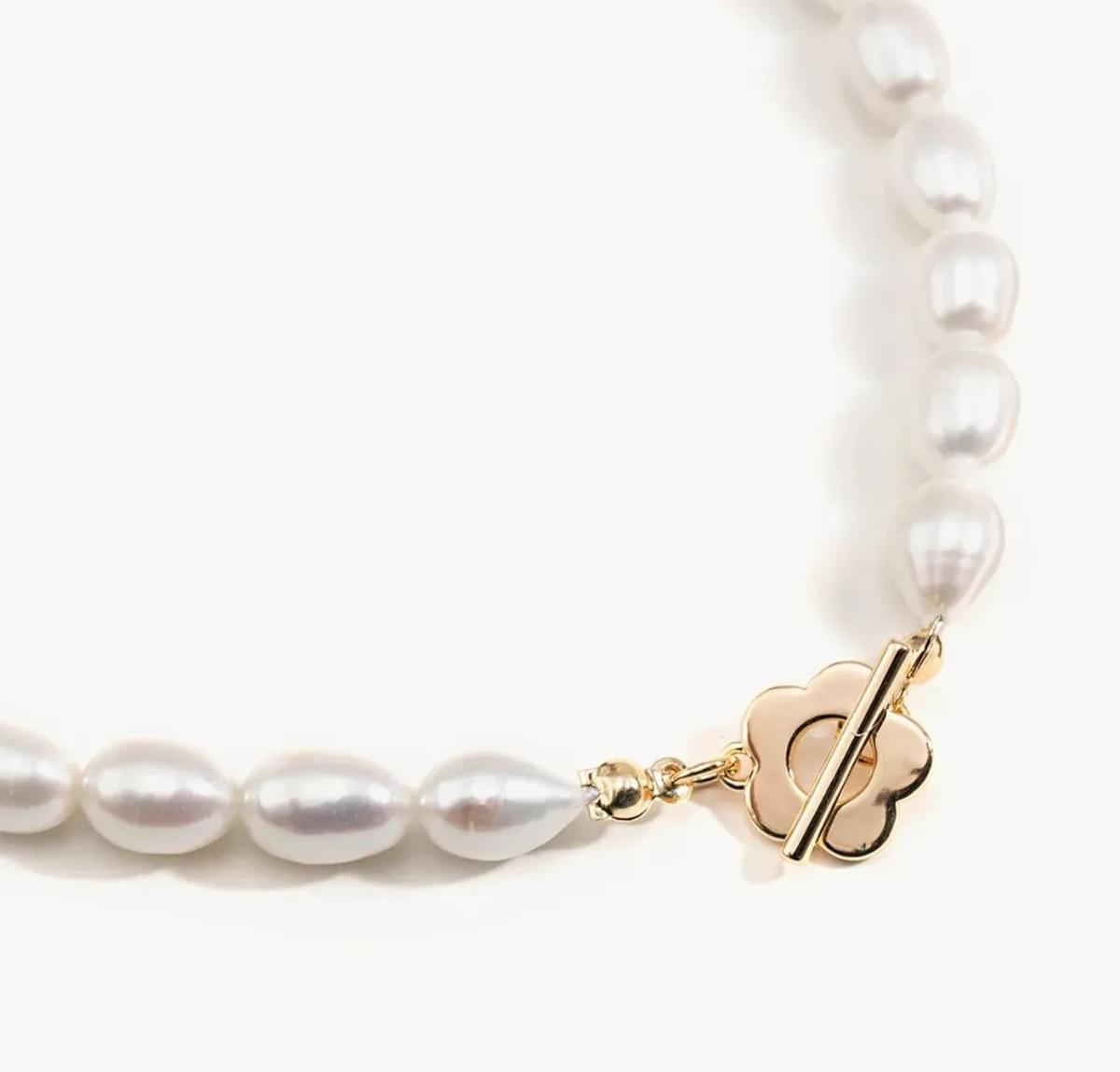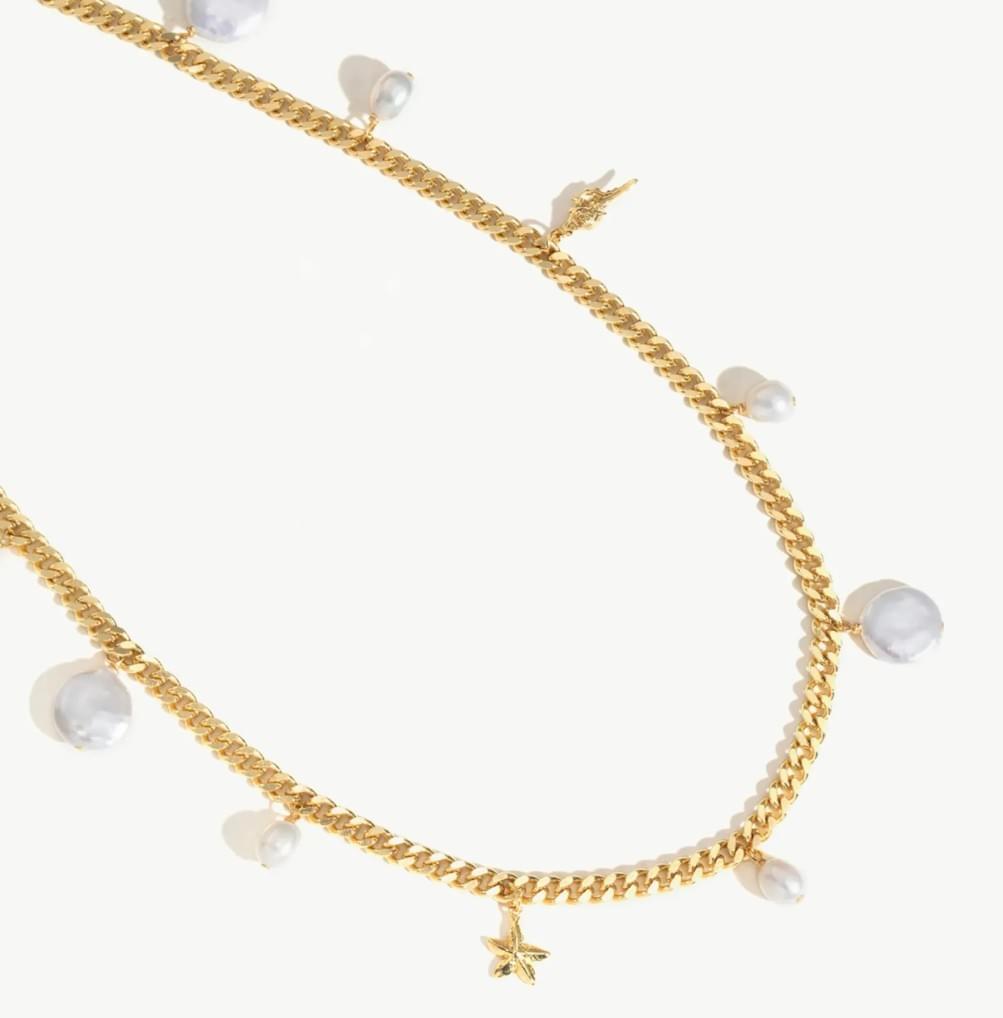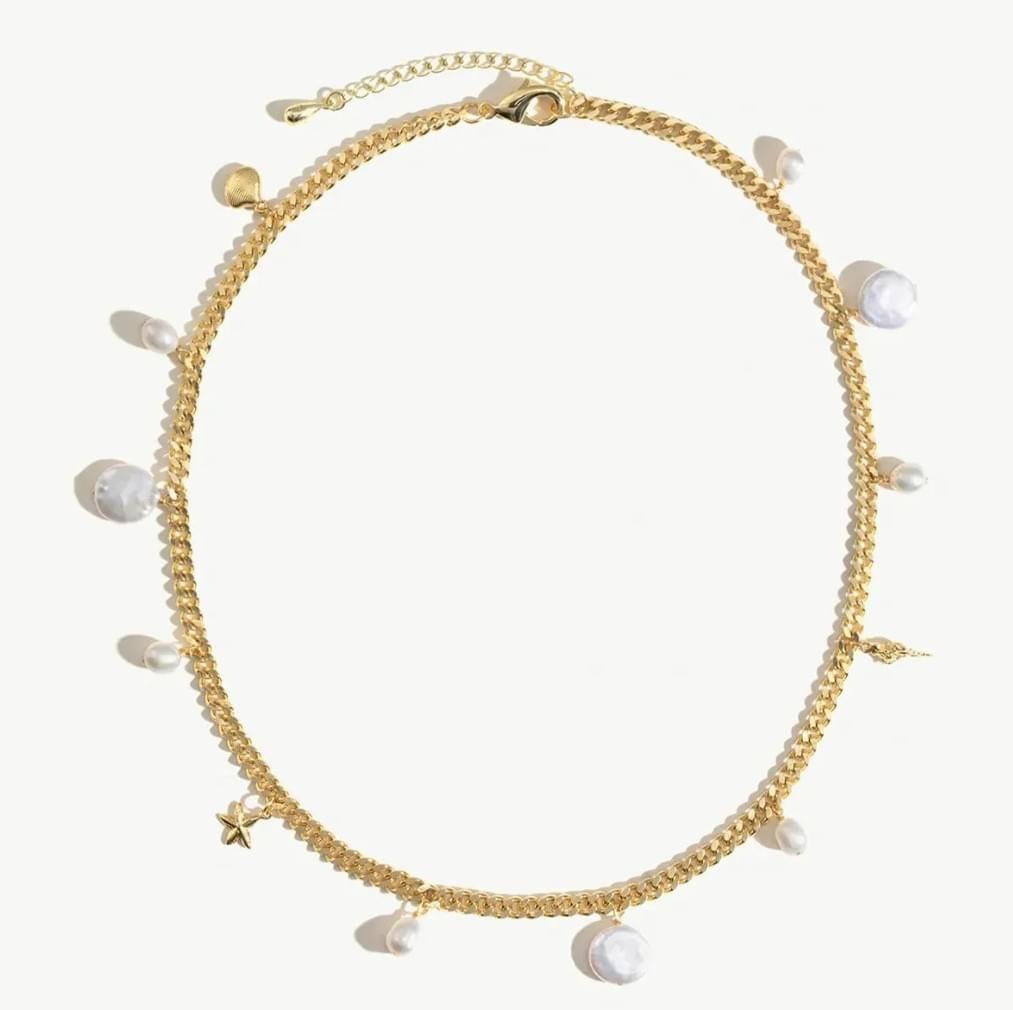Introduction
Are you curious about what a pearl necklace means? The symbolism of pearls has fascinated people for centuries, and the meaning behind a pearl necklace goes beyond its stunning appearance. Whether it's the spiritual significance, emotional symbolism, or the status it represents, there's more to a pearl necklace than meets the eye.
What Does a Pearl Necklace Mean?
A pearl necklace holds different meanings for different people. From ancient cultures to modern society, pearls have been seen as symbols of purity, wisdom, and femininity. Understanding what a pearl necklace means can give insight into its significance in various aspects of life.
Pearls have also been associated with wealth and status, as they were once considered a luxury item that only the wealthy could afford. In many cultures, wearing a pearl necklace was a symbol of social standing and sophistication. Today, while pearls are more accessible, they still carry an air of elegance and refinement, making them a timeless accessory for formal occasions or everyday wear.
The Symbolism of Pearls
Pearls carry deep symbolism across different cultures and traditions. They are often associated with spiritual enlightenment, inner beauty, and emotional healing. The symbolism of pearls goes beyond their physical beauty and reflects profound meanings that resonate with many individuals.
Pearl Necklace Meaning and Symbolism
The meaning behind a pearl necklace is multifaceted, representing purity, grace, and elegance. It serves as a timeless symbol of sophistication and femininity while also holding spiritual and emotional significance for those who wear them.
Pearls have been prized for centuries, dating back to ancient civilizations such as the Greeks and Romans. Their rarity and natural beauty have made them a symbol of wealth and status throughout history. The wearing of pearls has been associated with royalty and nobility, further adding to their allure and mystique. From Cleopatra to Queen Elizabeth I, pearls have adorned the necks of some of the most powerful and influential women in history, solidifying their place as a timeless symbol of grace and elegance.
The Historical Significance of Pearls
The historical significance of pearls dates back to ancient times, where they were highly prized for their rarity and beauty. Pearls are the only gemstone created by living creatures, making them unique and precious. In ancient cultures, pearls were associated with purity and femininity, often worn by royalty and nobility as a symbol of wealth and status. Throughout modern history, pearls have continued to be a timeless symbol of elegance and sophistication, adorning the necks of iconic women and making a statement in fashion.
Origins of Pearls
Pearls have their origins in the depths of the ocean, where oysters produce them as a natural defense against irritants such as sand or parasites. Over time, layers of nacre form around the irritant, creating the lustrous gemstone we know as a pearl. This natural process makes each pearl unique in its shape, size, and color, adding to their allure and value.
Pearls in Ancient Cultures
In ancient cultures such as Egypt, Greece, and Rome, pearls were revered for their beauty and symbolic meaning. They were often associated with love, marriage, and fertility, making them popular wedding gifts for brides. The Chinese believed that pearls represented wisdom gained through experience and were also used for medicinal purposes.
In addition to their symbolic significance, pearls were also highly valued for their rarity and difficulty in obtaining them. In ancient times, divers had to risk their lives to retrieve pearls from the depths of the ocean, adding to their allure and mystique. This made them a status symbol for the wealthy and powerful, further cementing their place as a coveted luxury item in ancient cultures.
Pearls in Modern History
Pearls gained widespread popularity during the Renaissance period when they became fashionable accessories for European royalty and aristocracy. In more recent history, pearls have been embraced by iconic women such as Audrey Hepburn and Jackie Kennedy Onassis as symbols of grace and refinement. Today, pearls continue to be a staple in fashion jewelry collections worldwide.
Pearls have also made a splash in the world of high fashion, with designers incorporating them into their runway collections in innovative and unexpected ways. From embellished clothing to statement accessories, pearls have become a versatile and timeless element in modern fashion. Their ability to add a touch of sophistication and elegance to any outfit has solidified their place as a must-have in every fashionista's wardrobe.
Pearls in Different Cultures
Pearls in Eastern Cultures
In Eastern cultures, pearls have long been associated with purity, wisdom, and spiritual enlightenment. In countries like China and Japan, pearls are often seen as a symbol of prosperity and good fortune, and they are frequently worn by brides on their wedding day to bring luck and happiness.
Pearls in Western Cultures
In Western cultures, pearls have been a symbol of elegance and sophistication for centuries. From royalty to Hollywood starlets, pearls have adorned the necks of iconic women throughout history. They have also been used as a status symbol, representing wealth and luxury.
Pearls in Native American Culture
In Native American culture, pearls hold a special significance as well. They are often used in traditional jewelry making and are seen as symbols of tribal identity and connection to the natural world. Pearls are also believed to bring healing energy and protection to those who wear them.
By exploring the cultural significance of pearls around the world, it becomes clear that these lustrous gems hold deep meaning beyond their beauty and elegance. Whether it's in Eastern traditions where they represent spiritual enlightenment or in Western cultures where they signify sophistication and status, the symbolism of pearls is truly universal. Their value goes beyond monetary worth; it encompasses spiritual, emotional, and cultural significance that has stood the test of time.
Pearl Symbolism and Meanings
Spiritual Significance of Pearls
In many cultures, pearls are believed to have spiritual significance, representing purity and wisdom. The spherical shape of pearls is often associated with the moon, symbolizing feminine energy and the cycle of life. The calming and balancing properties of pearls are also thought to bring harmony to the wearer, making them a popular choice for meditation and spiritual practices.
Emotional Symbolism of Pearls
Pearls have long been associated with emotional healing and nurturing qualities. They are often seen as a symbol of love, compassion, and understanding. Wearing a pearl necklace can be a reminder to stay connected to your emotions and embrace your inner beauty. It's no wonder that pearls are often passed down through generations as cherished heirlooms, carrying with them the love and memories of those who wore them before.
Pearls as a Symbol of Wealth and Status
Throughout history, pearls have been a symbol of wealth and status, worn by royalty, aristocrats, and other influential figures. The rarity and natural beauty of pearls have made them highly sought after, often reserved for special occasions or formal events. Even today, a pearl necklace is considered a classic accessory that exudes elegance and sophistication.
Pearl Necklace Meaning in Fashion
Pearls have been a timeless fashion statement, adorning the necks of iconic women throughout history. From Audrey Hepburn's classic elegance to Jackie Kennedy's sophisticated style, pearl necklaces have symbolized grace and refinement for generations. These iconic women have elevated the pearl necklace to a symbol of timeless beauty and sophistication, making it a must-have accessory for any fashion-forward woman.
Iconic Women Wearing Pearls
Iconic women such as Coco Chanel and Princess Diana have popularized the pearl necklace as a symbol of elegance and class. Their influential fashion choices have solidified the pearl necklace as a staple accessory for women of all ages, from royalty to Hollywood starlets. The timeless appeal of pearls has made them an essential element in every woman's jewelry collection, adding a touch of sophistication to any outfit.
Pearls in Pop Culture
Pearl necklaces have made their mark in pop culture, becoming synonymous with refined beauty and grace. From Marilyn Monroe's iconic performance in Gentlemen Prefer Blondes to modern-day celebrities gracing red carpets with stunning pearl jewelry, pearls continue to be a symbol of timeless elegance and sophistication in popular culture.
Pearls have also made a splash in the world of fashion, with designers incorporating them into modern and trendy jewelry pieces. From minimalist pearl earrings to statement pearl rings, these timeless gems are being reimagined in fresh and innovative ways. This fusion of tradition and contemporary style has propelled pearls to the forefront of fashion trends, appealing to a new generation of jewelry enthusiasts.
Modern Trends in Pearl Jewelry
While traditional pearl necklaces remain a classic choice, modern trends have introduced innovative designs that appeal to contemporary tastes. From layered pearl chokers to asymmetrical pearl pendants, today's pearl jewelry offers versatility and creativity while still honoring the timeless allure of pearls. As the fashion industry continues to evolve, pearls remain a constant symbol of grace and refinement, adapting to new trends while maintaining their timeless appeal.
In addition to the innovative designs in pearl jewelry, modern trends have also seen a rise in the use of unconventional materials alongside pearls. From leather and metal accents to incorporating colorful gemstones, these contemporary pieces offer a fresh take on traditional pearl jewelry. This blend of materials adds an edgy and modern twist to classic pearl accessories, appealing to a wider audience and showcasing the adaptability of pearls in today's fashion landscape.
The Value of Pearls
How Much Do Real Pearls Cost?
Real pearls can vary widely in price, depending on factors such as size, shape, luster, surface quality, and color. A single strand of high-quality pearls can cost anywhere from a few hundred to several thousand dollars. The most expensive pearls are natural ones, which are extremely rare and can fetch exorbitant prices at auction.
Pearls as an Investment
Investing in pearls can be a lucrative venture for those who have a keen eye for quality and value. High-quality pearls tend to appreciate in value over time, making them a valuable addition to any investment portfolio. With proper care and maintenance, pearls can retain their beauty and worth for generations to come.
Sustainable Pearl Farming Practices
Sustainable pearl farming practices are becoming increasingly important in today's environmentally conscious world. By using eco-friendly techniques such as responsible aquaculture and minimizing the use of harmful chemicals, pearl farmers can help protect marine ecosystems while producing high-quality pearls. Consumers can support sustainable pearl farming by choosing ethically sourced jewelry.
Conclusion
When it comes to understanding the meaning of a pearl necklace, it's essential to recognize the spiritual and emotional significance behind this timeless piece of jewelry. The pearl meaning spiritual is often associated with purity, wisdom, and inner beauty, making it a cherished symbol in many cultures. As for the cost, real pearls can vary greatly in price depending on factors such as size, shape, luster, and surface quality. Understanding pearls symbolism goes beyond their monetary value, as they also represent love, protection, and good fortune.
Decoding the Meaning of a Pearl Necklace
Decoding the meaning of a pearl necklace goes beyond its aesthetic appeal. It holds deep spiritual and emotional significance that has been revered throughout history. From ancient civilizations to modern-day cultures, pearls have been cherished for their symbolic representation of purity and wisdom. In today's society, wearing a pearl necklace can be seen as an expression of elegance and sophistication.
Understanding the Symbolism of Pearls
The symbolism of pearls extends beyond their physical beauty to encompass notions of purity, integrity, and inner harmony. They are often associated with love and protection in various cultures around the world. Understanding pearls symbolism allows us to appreciate their timeless allure and connect with their deeper meanings on a personal level.
Embracing the Unique Essence of DEDEJILL
DEDEJILL embraces the unique essence of pearl jewelry by offering exquisite designs that capture the timeless elegance and symbolic significance of pearls. Each piece is crafted with precision and attention to detail, reflecting the brand's commitment to quality and sophistication. With DEDEJILL's collection, women can embrace the beauty and symbolism of pearl necklaces in a modern context.







